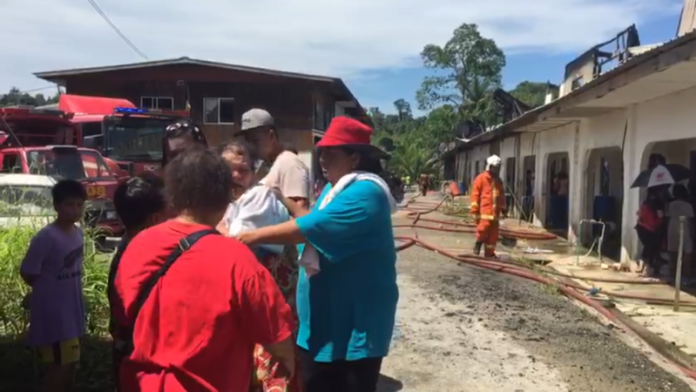
By Nancy Nais
LONGHOUSE fires are not a new nor unusual occurrence in Sarawak. Every now and then, there will be a report of a longhouse somewhere being razed to the ground, rendering many people homeless.
And when these heart-breaking episodes happen, the relevant authorities, elected representatives, non-governmental organisations and members of the public will rush to assist those affected with cash donations, food, clothing, utensils, building materials and other forms of aid. Then life moves on after that.
Previously, it was not really a pressing issue as such incidences only happened once or twice a year.
However, things have changed. A dramatic change for the worse, unfortunately.
The statistics are no longer about one or two longhouse fires a year. The record now shows one or two such episodes a month!
So far this year, fires have gutted 24 longhouses in the state. Last year, the figure stood at 26, and in 2016, there were 20 of them.
Just four days ago, on Dec 12, Rumah Sambau in the remote Nanga Entulang in Sri Aman caught fire, killing an elderly woman and leaving about 200 people from 28 doors or ‘bileks’ homeless.
Last month, three longhouses — at Sungai Asap in Belaga (30 ‘bileks’), at Sungai Keriok in Niah (28 ‘bileks’) and at Nanga Melayong Sungai Mururun in Julau (15 ‘bileks’) — were burnt to the ground.
According to the state Fire and Rescue Department (Bomba), a total of 431 ‘bileks’ out of 680 ‘bileks’ were destroyed and resulted in a loss of RM14.8 million this year alone.
Last year, 357 ‘bileks’ were destroyed, and the losses totalled RM19 million. In 2016, 417 ‘bileks’ perished, resulting in losses that totalled RM16.1 million.
Concerned about this pressing scenario, DayakDaily decided to play Sherlock Holmes with the hope of finding some answers to why longhouses fires are occurring with such intensity and the preventive measures that could be put in place to plug the hole.
It is with this fervent hope and with the aim of raising greater awareness that “fire is a good servant but a bad master” that DayakDaily decided to put together this series. It is simply too painful to lose one’s home to a fire, and if it can be prevented, we should all try to do our part so that everyone can live soundly, whether it is in a longhouse or elsewhere.
The agony
Every time a longhouse fire occurrs, hundreds of people suffer. The feeling of pain and misery experienced by some of the victims are unimaginable as they have lived in these longhouses for decades, some for over 80 years. Imagine all your belongings and home going up in smoke within minutes and before your very eyes.
Those affected are mostly farmers, and most of them are not even middle-income earners.
Whenever a disaster like this hits, the victims lose everything, literally. Besides losing their houses and cash savings, many also have to endure the pain of seeing their cars or motorcycles towed away days later, as they are no longer able to service their loans.

It is estimated that there are roughly 3,500 longhouses or smaller settlements scattered all over the state, some in very isolated places. These longhouses host between 10 and 40-plus ‘bileks’, Each ‘bilek’ normally houses one family, so it is not suprising that there could be five to 10 people living in each ‘bilek’.
Many longhouses are built in clusters close to rivers, and they are often far away from bigger towns. Since most of them are made of wood, a fire can bring the inhabitants to their knees in 15 minutes or less.
Many longhouse dwellers accumulate many traditional assets, and to see them destroyed by fire in a short span of time is something beyond words. It is excruciating to see them crying or wailing at the scenes, especially if human lives are lost.
In most cases, the fire stations are helpless because the longhouses, which are often without any firefighting equipment, are located in rural areas — some as far as 150km from the nearest fire station!
Even when they are within reach of a fire station, some of the major obstacles standing in the way are no water supply, low-pressure water supply, access roads too narrow for the fire engines to go through, or worst still — no access road.
There have been instances where firefighters have to use boats to reach the scenes of fire, and in some cases, the journey takes a couple of hours.
Hence, something sensible and practical must be done to end all these problems, and soon. The relevant authorities must sit down and brainstorm to find solutions before more longhouses disappear into thin air. — DayakDaily
Stay tuned for Part 2 later this week.








